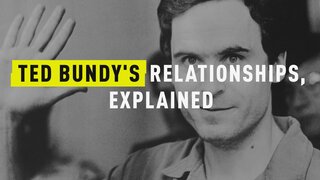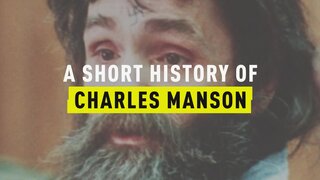Create a free profile to get unlimited access to exclusive videos, breaking news, sweepstakes, and more!
Was Ted Bundy A Necrophile? Inside His Last Disturbing Confession
When asked about his taking photos of his victims in provocative, sexualized poses, Ted Bundy said, "When you work hard to do something right, you don’t want to forget it."
Ted Bundy’s 1970s murder spree captivated the nation because he didn’t “look” like a killer.
He was charming, he was handsome — and he was a batshit crazy predator who liked to have sex with his dead victims.
Netflix’s new smash docu-series, “Conversations With a Killer: The Ted Bundy Tapes,” featuring interviews from death row conversations recorded by journalists Stephen Michaud and Hugh Aynesworth in 1980, has shined a contemporary light on Bundy’s infamous cross-country killing spree, renewing public interest in the grisly details of the mass murderer’s dozens of heinous killings — including Bundy’s admitted penchant for necrophilia.
Perhaps unsurprisingly, the series has inspired many Americans to wonder what necrophilia even is. Between Jan. 20-26, Google searches for “necrophilia” have spiked 100 percent across the United States (the series was released on Jan. 24). The answer? A sexual attraction to dead people.
Though he’s known mostly for his murders, rapes and kidnappings, Bundy was also a necrophile.
For years, Bundy refused to own up to his violent crimes against at least 30 young women across the country despite expertly discussing “theoretical” murders with Michaud and Aynesworth, and other reporters and criminologists. But on the eve of his execution in 1989, he finally confessed to his deeds. True to his slick-talking and articulate nature, Bundy wound up providing graphic details about the violent, sexual nature of his many murders.
“When he said he was clearing his soul at the end, he wanted me to know that he practiced necrophilia,” FBI Special Agent Bill Hagmaier, who spoke to Bundy on death row on several occasions, says toward the end of the docu-series. “That was something he never talked about even in the third person before that. You know, the truth is terrible.”
The truth is, in addition to raping and murdering at least 30 women, Bundy also sexually violated many of their corpses after ending their lives, severed some of their heads and positioned their bodies in disturbing poses. In one scene in the Netflix series, FBI investigators examining the body of one of Bundy’s victims point to “[definite] post-mortem mutilation to the breast area.”
But while Bundy didn’t directly mention his necrophilia earlier during his incarceration, he dropped hints to Michaud during their conversations about what might motivate a murderer to partake in such heinous acts — in the third person.
"Perhaps this person hoped that through violence, through this violent series of acts, if with every murder leaving a person of this type hungry... Unfulfilled. Would also leave him with the obviously irrational belief that if, the next time he did it he would be fulfilled," Bundy said. "And the next time he did it he would be fulfilled. Or the next time he did it he would be fulfilled."
In his 2014 book “Why We Love Serial Killers: The Curious Appeal of the World’s Most Savage Murderers,” author and professor Scott Bonn touched on the mindset that drove Bundy’s post-mortem acts by including a devastating quote from the man himself.
“When Ted Bundy was asked why he took Polaroid photos of his victims, he said, ‘When you work hard to do something right, you don’t want to forget it,’” Bonn wrote.
And thanks to his actions, the American public will also not soon forget Bundy's reprehensible actions.
[Photo Credit: Netflix]






























